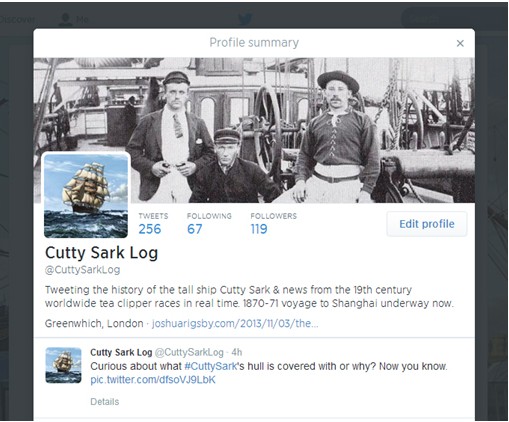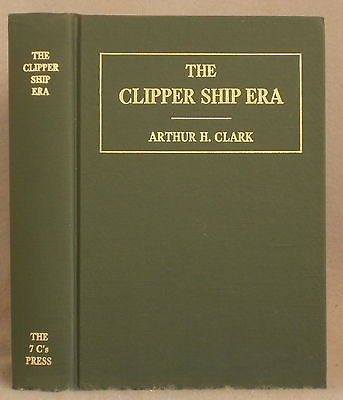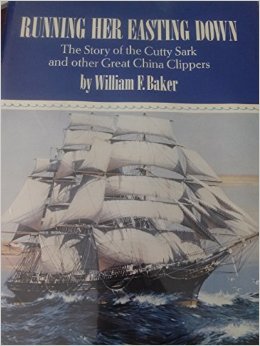 The exploits of the great Victorian-era sailing vessels Cutty Sark, Thermopylae, Taeping, and Ariel have transported the imaginations of seafarers and would-be adventurers for over 150 years. These amazing clipper ships collected tea in China and raced each other all the way back to London, suffering the capriciousness of storms, bucko mates, and dubious crews along the way. After all they endured, these ships still managed to arrive at the East India Docks within minutes of each other.
The exploits of the great Victorian-era sailing vessels Cutty Sark, Thermopylae, Taeping, and Ariel have transported the imaginations of seafarers and would-be adventurers for over 150 years. These amazing clipper ships collected tea in China and raced each other all the way back to London, suffering the capriciousness of storms, bucko mates, and dubious crews along the way. After all they endured, these ships still managed to arrive at the East India Docks within minutes of each other.
The general story of the great tea clipper races is widely known, but more specific details about lesser known vessels of this era can be difficult to find.
For a comprehensive guide to the merchant vessels to take part in the 19th century tea trade, look no further than MacGregor’s The Tea Clippers. Originally printed in 1952, and updated twenty years later, this book goes a long way in nailing down the verifiable data about each of these vessels, their times, and their ultimate demise, while dispelling much of the loving-but-inaccurate mythology that had begun to grow up around them in the hundred or so years since they first sailed.
MacGregor arranges this book into periods, marking significant technological, cultural, and economic factors that influenced the construction of clipper ships. Each section begins with a narrative explanation of the period, the elements that made it unique, how it built on the previous era and predicted the following one.
- History of the Trade and the Business of Handling Tea
- The China Sea and Sailing Directions
- Free Trade from China and Ships of 1833-1847
- The Aberdeen Bow and Ships of 1846-1854
- American Trade to London and Ships of 1847-1856
- Wood, Iron or Composite and Ships of 1852-1857
- Requirements of Design and Ships of 1858-1862
- The Greenock Model and Ships of 1863-1866
- The Final Clipper Ship Boom and Ships of 1867-1869
- Changing Trade and Ships of 1870-1876
- Conclusions
After the narrative explanation, he launches into the ships of the period in chronological order. It is best to think of this book as a sort of encyclopedia of clipper ships. He deals with one ship at a time, providing in as much detail as possible all the minutia of her construction, design, improvements, experiments, dismastings, shipwrecks, and successes in the tea races. He provides a through line of each ship’s ownership and, when possible, an account of her ultimate demise.
Virtually every single page of this book is filled with black and white photographs, ship designs, paintings, lithographs, maps, and illustrations. Where descriptions may fail to convey an idea, the illustrations almost certainly succeed. Many of the drawings were done by MacGregor himself.
I must be honest here, even as someone as committed to researching this topic as I am, I found the depth of some of MacGregor’s descriptions utterly baffling. The sections on design and construction, while thoroughly researched and reported, do not make for light reading, and are certainly not for the faint of heart. That said, his thoroughness also allows for personal and human details from the period to come shining through, quoting from ships logs, letters, and newspaper accounts. My recommendation is to treat this book as a reference volume, read the first narrative sections of each chapter, and index for your specific question in the back.
Our good friend Basil Lubbock made several appearances throughout the book, either to provide first-hand accounts of events through his interviews and/or correspondence with the witnesses, to offer a plausible account that MacGregor has no means of confirming or denying, or because MacGregor is correcting data that Lubbock’s incomplete research inadvertently injected into scholarship of the era.
If you are serious about diving a bit deeper in your understanding of tea clippers, this is definitely a good book to have on the shelf. If you are interested in a nice overview, but somewhat lighter and more digestible fair, I might recommend Running Her Easting Down, published around the same time as MacGregor’s revised version. MacGregor’s scholarship is wonderful, his illustrations are helpful and clear, and his depth of research is certainly a boon to anyone who comes across it.
Want to learn more about the tea clipper races and the golden age of sail? I maintain a Twitter account that follows the history of the Cutty Sark and the famous tea clipper races in real-time. Please follow @CuttySarkLog by clicking here.
To get the very latest updates from this website click the +FOLLOW button on the bottom right of your screen. Thanks!


![Book Review: In the Heart of the Sea [Part 1]](https://joshuarigsby.com/wp-content/uploads/2015/12/In-The-Heart-of-the-Sea-Cover.jpg)
